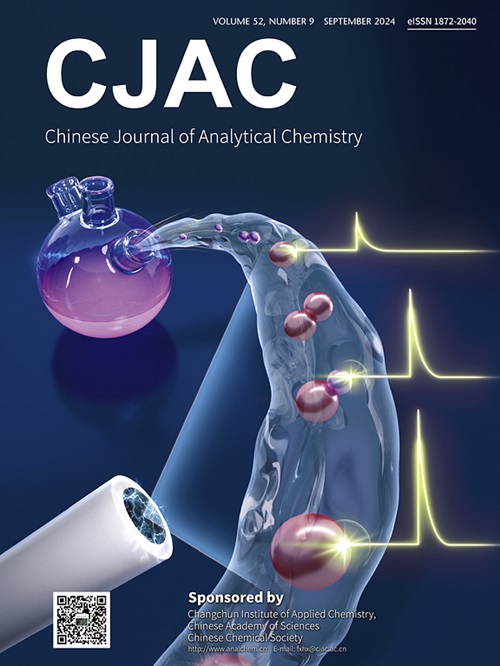基于网络药理学的淫羊藿作用于肝癌的关键药理通路鉴定
IF 1.3
4区 化学
Q4 CHEMISTRY, ANALYTICAL
引用次数: 0
摘要
淫羊藿(淫羊藿)(如L.),一种传统的中国草药,以其滋肾补阳的特性而闻名。它的类黄酮具有潜在的抗癌特性。然而,epimedium影响肝细胞癌(HCC)的确切机制尚不清楚。为了阐明这些机制,我们采用了网络药理学策略。从中药系统药理学数据库和分析平台数据库中鉴定淫羊藿的有效成分,从5个不同的数据库中提取hcc相关基因。利用STRING数据库构建蛋白-蛋白互作网络,利用database for Annotation、Visualization和Integrated Discovery平台对基因本体和京都基因与基因组百科全书进行路径分析。使用Cytoscape 3.8.0和r4.0.4以及Bioconductor软件包进行网络分析。我们的研究结果揭示了23种有效成分和65种HCC常见靶点,潜在调节核心靶点,如细胞肿瘤抗原p53、血管内皮生长因子A、rac - α丝氨酸/苏氨酸蛋白激酶、胰岛素样生长因子1受体和肝细胞生长因子受体。金缕木酚、木犀草素和山奈酚是影响癌症途径的三大核心成分。分子对接研究证实,这些成分与上述靶点有效结合。综上所述,淫羊藿在HCC中的治疗作用可能归因于其生物活性成分,如金苍酚、木犀草素和山奈酚,它们促进了HCC细胞的凋亡。这些成分还可以调节关键的癌症相关通路,包括表皮生长因子受体酪氨酸激酶抑制剂耐药性、PI3K-Akt信号和血管内皮生长因子信号。本研究为淫羊藿在HCC中作用的药理学机制提供了有价值的见解,突出了其作为一种有前景的治疗剂的潜力。本文章由计算机程序翻译,如有差异,请以英文原文为准。
Network pharmacology-based identification of key pharmacological pathways of epimedium acting on hepatocellular carcinoma
Epimedium (Epimedium Tourn. ex L.), a traditional Chinese herb, is known for its kidney-nourishing and Yang-reinforcing properties. Its flavonoids exhibit potential anticancer properties. Nevertheless, the precise mechanisms through which epimedium impacts hepatocellular carcinoma (HCC) remain unclear. To elucidate these mechanisms, we employed a network pharmacology strategy. Active ingredients of epimedium were identified from the Traditional Chinese Medicine Systems Pharmacology Database and Analysis Platform database, whereas HCC-associated genes were extracted from five different databases. Protein-protein interaction networks were constructed using the STRING database, followed by Gene Ontology and Kyoto Encyclopedia of Genes and Genomes pathway analyses using the Database for Annotation, Visualization, and Integrated Discovery platform. Network analyses were conducted using Cytoscape 3.8.0 and R 4.0.4 with the Bioconductor package. Our findings revealed 23 active ingredients and 65 common targets in HCC, potentially modulating core targets, such as Cellular tumor antigen p53, Vascular endothelial growth factor A, RAC-alpha serine/threonine-protein kinase, Insulin-like growth factor 1 receptor, and Hepatocyte growth factor receptor. Chryseriol, luteolin, and kaempferol emerged as the top three core components affecting cancer pathways. Molecular docking studies confirmed that these ingredients effectively bind to the aforementioned targets. In summary, the therapeutic benefits of epimedium in HCC are likely attributed to bioactive ingredients such as chryseriol, luteolin, and kaempferol, which facilitate apoptosis in HCC cells. These ingredients also modulate crucial cancer-related pathways, including pidermal growth factor receptor tyrosine kinase inhibitor resistance, PI3K-Akt signaling, and vascular endothelial growth factor signaling. This study offers valuable insights into the pharmacological mechanisms underlying epimedium’s effects in HCC, highlighting its potential as a promising therapeutic agent.
求助全文
通过发布文献求助,成功后即可免费获取论文全文。
去求助
来源期刊
CiteScore
3.60
自引率
25.00%
发文量
17223
审稿时长
35 days
期刊介绍:
Chinese Journal of Analytical Chemistry(CJAC) is an academic journal of analytical chemistry established in 1972 and sponsored by the Chinese Chemical Society and Changchun Institute of Applied Chemistry, Chinese Academy of Sciences. Its objectives are to report the original scientific research achievements and review the recent development of analytical chemistry in all areas. The journal sets up 5 columns including Research Papers, Research Notes, Experimental Technique and Instrument, Review and Progress and Summary Accounts. The journal published monthly in Chinese language. A detailed abstract, keywords and the titles of figures and tables are provided in English, except column of Summary Accounts. Prof. Wang Erkang, an outstanding analytical chemist, academician of Chinese Academy of Sciences & Third World Academy of Sciences, holds the post of the Editor-in-chief.

 求助内容:
求助内容: 应助结果提醒方式:
应助结果提醒方式:


